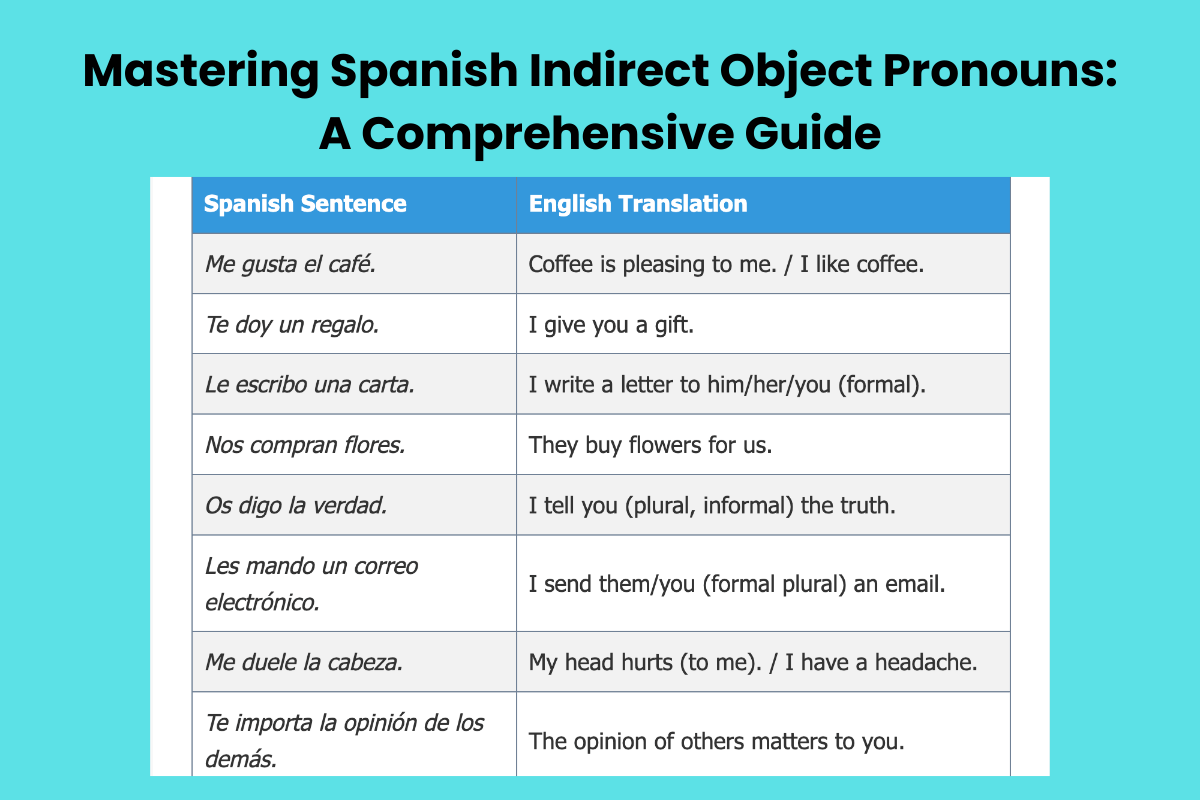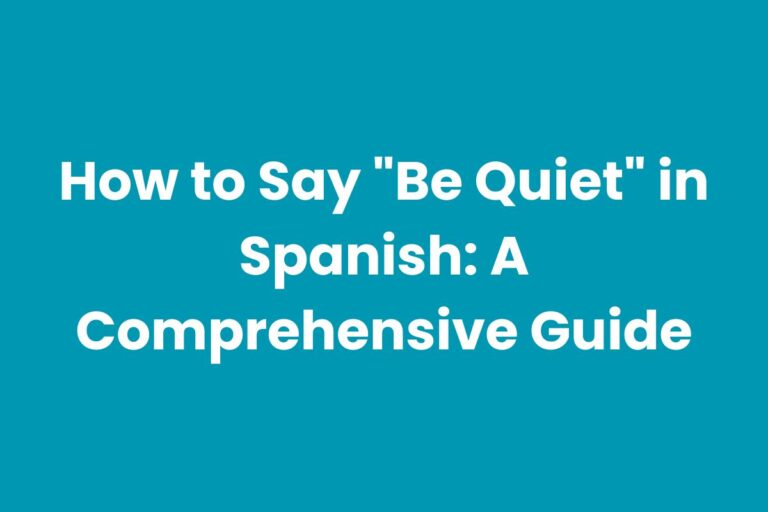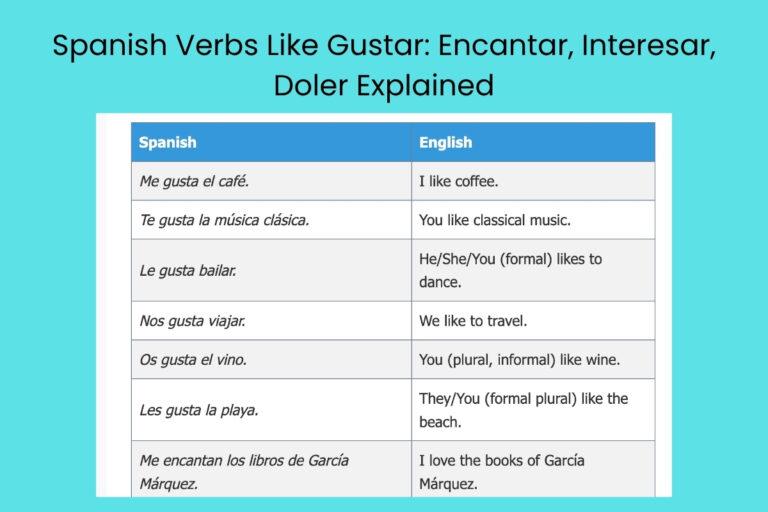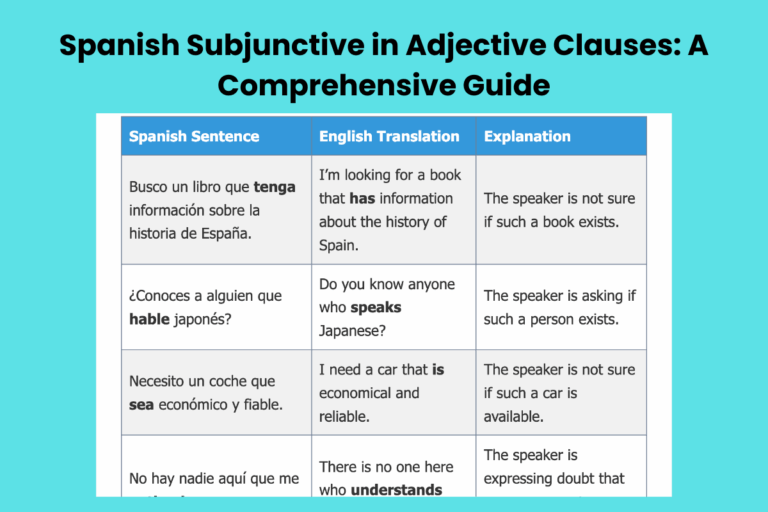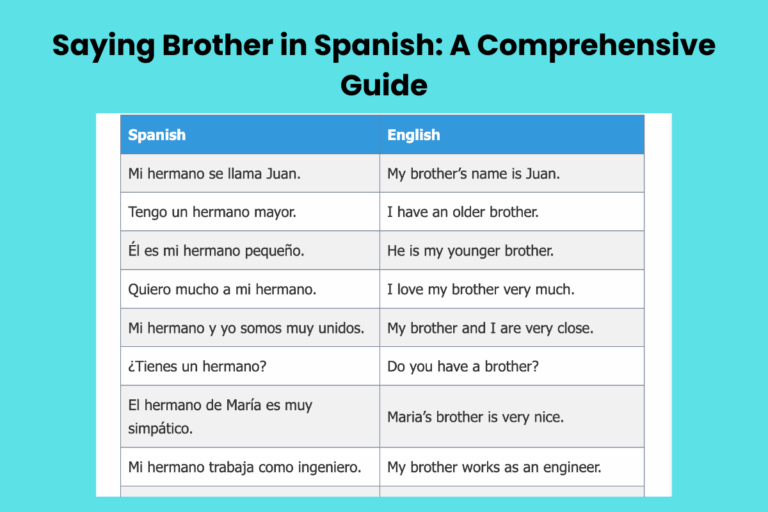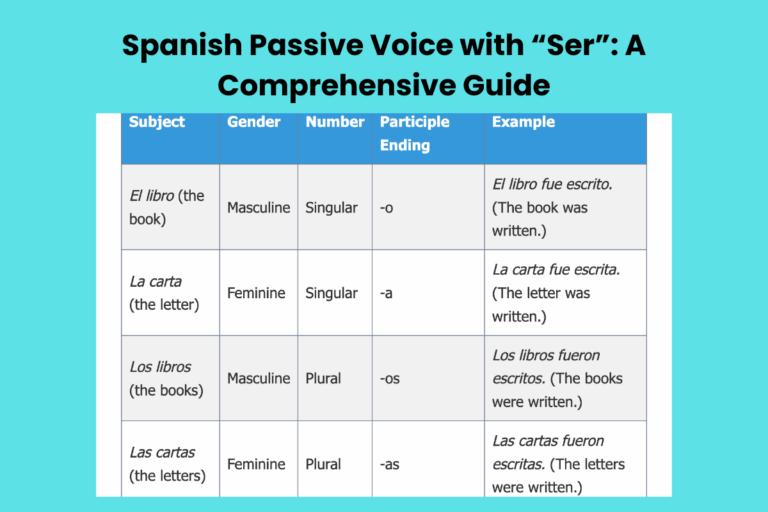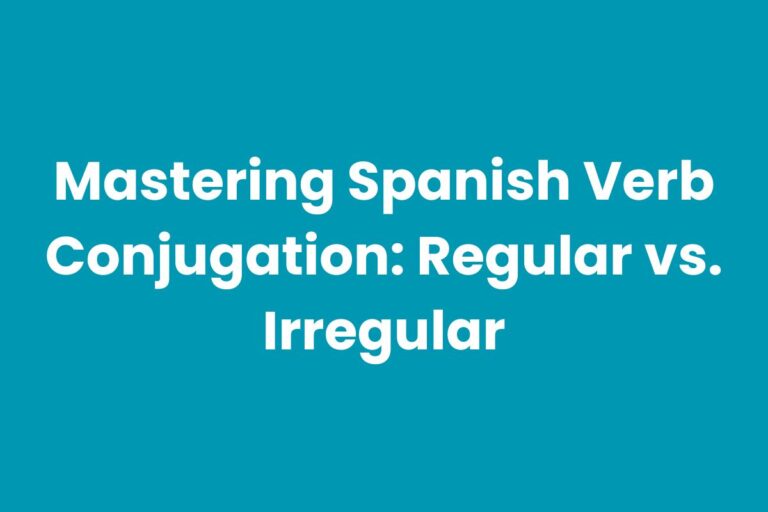Mastering Spanish Indirect Object Pronouns: A Comprehensive Guide
Understanding indirect object pronouns in Spanish is crucial for constructing grammatically correct and natural-sounding sentences. These pronouns indicate to whom or for whom an action is performed.
This guide provides a comprehensive explanation of indirect object pronouns, their forms, usage, and common pitfalls. Whether you’re a beginner or an advanced learner, this article will equip you with the knowledge and practice to confidently use indirect object pronouns in your Spanish communication.
This guide is particularly beneficial for students learning Spanish, travelers wanting to improve their conversational skills, and anyone aiming for fluency in the language.
Table of Contents
- Definition of Indirect Object Pronouns
- Structural Breakdown
- Indirect vs. Direct Object Pronouns
- Types and Categories
- Examples of Indirect Object Pronouns
- Usage Rules
- Common Mistakes
- Practice Exercises
- Advanced Topics
- FAQ
- Conclusion
Definition of Indirect Object Pronouns
An indirect object pronoun in Spanish indicates to whom or for whom an action is performed. It answers the question “to whom?” or “for whom?” after the verb.
The indirect object receives the indirect effect of the verb’s action, rather than being directly acted upon.
Indirect object pronouns are used to replace indirect object nouns in a sentence, making the sentence more concise and avoiding repetition. They are essential for fluent and natural communication in Spanish.
Unlike direct objects, which directly receive the action of the verb (e.g., “I read the book“), indirect objects are the recipients or beneficiaries of the action (e.g., “I gave the book to her“).
Structural Breakdown
The basic structure of a sentence with an indirect object pronoun in Spanish is typically as follows:
Subject + Indirect Object Pronoun + Verb + (Direct Object)
For example:
Yo le di el libro. (I gave the book to him/her.)
In this example, “le” is the indirect object pronoun, “di” is the verb (gave), and “el libro” is the direct object. The indirect object pronoun “le” refers to the person to whom the book was given.
The indirect object pronoun usually precedes the verb in Spanish. However, there are exceptions, such as when the verb is in the infinitive, gerund, or imperative form (more on this later).
Indirect vs. Direct Object Pronouns
It’s crucial to distinguish between indirect and direct object pronouns. Direct object pronouns replace the direct object, which receives the direct action of the verb.
Indirect object pronouns replace the indirect object, which receives the indirect effect of the action.
Consider these examples:
- Yo veo el libro. (I see the book.) – Direct Object: el libro
- Yo lo veo. (I see it.) – Direct Object Pronoun: lo
- Yo doy el libro a María. (I give the book to Maria.) – Indirect Object: a María
- Yo le doy el libro. (I give the book to her.) – Indirect Object Pronoun: le
The following table summarizes the key differences:
| Feature | Direct Object Pronoun | Indirect Object Pronoun |
|---|---|---|
| Function | Receives the direct action of the verb | Receives the indirect effect of the verb’s action; to whom or for whom the action is done |
| Question Answered | What? or Whom? | To whom? or For whom? |
| Examples | me, te, lo, la, nos, os, los, las | me, te, le, nos, os, les |
| Example Sentence | Yo lo veo. (I see it.) | Yo le doy el libro. (I give the book to him/her.) |
Types and Categories
Spanish indirect object pronouns have different forms depending on the person and number they represent. Here’s a breakdown of the indirect object pronouns:
- Me: to/for me
- Te: to/for you (informal singular)
- Le: to/for him, to/for her, to/for you (formal singular)
- Nos: to/for us
- Os: to/for you (informal plural, used in Spain)
- Les: to/for them, to/for you (formal plural)
It’s important to note that le and les can refer to both masculine and feminine nouns, as well as the formal “you” (usted and ustedes). To avoid ambiguity, you can clarify with the preposition a followed by the noun or pronoun.
Examples of Indirect Object Pronouns
Here are several examples illustrating the use of indirect object pronouns in various contexts.
Simple Sentences
These examples showcase how indirect object pronouns are used in basic sentence structures.
| Spanish Sentence | English Translation |
|---|---|
| Me gusta el café. | Coffee is pleasing to me. / I like coffee. |
| Te doy un regalo. | I give you a gift. |
| Le escribo una carta. | I write a letter to him/her/you (formal). |
| Nos compran flores. | They buy flowers for us. |
| Os digo la verdad. | I tell you (plural, informal) the truth. |
| Les mando un correo electrónico. | I send them/you (formal plural) an email. |
| Me duele la cabeza. | My head hurts (to me). / I have a headache. |
| Te importa la opinión de los demás. | The opinion of others matters to you. |
| Le molesta el ruido. | The noise bothers him/her/you (formal). |
| Nos encanta la música. | We love the music (The music enchants us). |
| Os viene bien el descanso. | The rest suits you (plural, informal). |
| Les falta dinero. | They/You (formal plural) lack money. |
| Me parece interesante. | It seems interesting to me. / I find it interesting. |
| Te resulta fácil aprender idiomas. | You find it easy to learn languages. |
| Le conviene estudiar más. | It is convenient for him/her/you (formal) to study more. |
| Nos preocupa el futuro. | The future worries us. / We are worried about the future. |
| Os interesa la historia. | History interests you (plural, informal). |
| Les sorprende la noticia. | The news surprises them/you (formal plural). |
| Me regalaron un coche. | They gifted me a car. / I was gifted a car. |
| Te envié un mensaje. | I sent you a message. |
| Le conté un secreto. | I told him/her/you (formal) a secret. |
| Nos sirvieron la cena. | They served us dinner. |
| Os dejaron un recado. | They left you (plural, informal) a message. |
| Les ofrecí mi ayuda. | I offered them/you (formal plural) my help. |
Common Verbs
Certain verbs commonly take indirect objects. The following examples illustrate these verbs in action.
| Spanish Sentence | English Translation |
|---|---|
| Le doy el libro a Juan. | I give the book to Juan. |
| Le digo la verdad a ella. | I tell her the truth. |
| Les pregunto la hora a ellos. | I ask them the time. |
| Me prestas tu bolígrafo. | You lend me your pen. |
| Te ofrezco mi ayuda. | I offer you my help. |
| Nos escriben cartas desde España. | They write us letters from Spain. |
| Os mandé un mensaje ayer. | I sent you (plural, informal) a message yesterday. |
| Les recomiendo esta película. | I recommend this movie to them/you (formal plural). |
| Le compro un regalo a mi madre. | I buy a gift for my mother. |
| Le cocino la cena a mi padre. | I cook dinner for my father. |
| Les explico la lección a los estudiantes. | I explain the lesson to the students. |
| Me cuentas tus problemas. | You tell me your problems. |
| Te presto mi coche. | I lend you my car. |
| Le pido un favor. | I ask him/her/you (formal) a favor. |
| Nos dan muchos regalos. | They give us many gifts. |
| Os enseñé la ciudad. | I showed you (plural, informal) the city. |
| Les mostré las fotos. | I showed them/you (formal plural) the photos. |
| Le sirvo el café. | I serve him/her/you (formal) the coffee. |
| Me dices la verdad. | You tell me the truth. |
| Te digo un secreto. | I tell you a secret. |
| Le doy las gracias. | I thank him/her/you (formal). |
| Nos das una oportunidad. | You give us an opportunity. |
| Os doy la bienvenida. | I welcome you (plural, informal). |
| Les doy mi opinión. | I give them/you (formal plural) my opinion. |
Clarification with a
As mentioned earlier, le and les can be ambiguous. To clarify who or what the pronoun refers to, you can use the preposition a followed by the noun or pronoun.
| Spanish Sentence | English Translation |
|---|---|
| Le di el libro a Juan. | I gave the book to Juan. (Clarifies that “le” refers to Juan) |
| Le escribí una carta a María. | I wrote a letter to Maria. (Clarifies that “le” refers to Maria) |
| Les compré regalos a mis padres. | I bought gifts for my parents. (Clarifies that “les” refers to my parents) |
| Le pregunté a usted. | I asked you (formal). (Clarifies that “le” refers to “usted”) |
| Les dije la verdad a ustedes. | I told you (formal plural) the truth. (Clarifies that “les” refers to “ustedes”) |
| Le conté el secreto a mi hermana. | I told the secret to my sister. (Clarifies that “le” refers to my sister) |
| Les envié flores a mis abuelos. | I sent flowers to my grandparents. (Clarifies that “les” refers to my grandparents) |
| Le pedí un favor a mi vecino. | I asked my neighbor for a favor. (Clarifies that “le” refers to my neighbor) |
| Les ofrecí mi ayuda a mis amigos. | I offered my help to my friends. (Clarifies that “les” refers to my friends) |
| Le mostré las fotos a mi novia. | I showed the photos to my girlfriend. (Clarifies that “le” refers to my girlfriend) |
| Les di las gracias a mis profesores. | I thanked my teachers. (Clarifies that “les” refers to my teachers) |
| Le pregunté su nombre al camarero. | I asked the waiter his name. (Clarifies that “le” refers to the waiter) |
| Les conté un chiste a mis compañeros. | I told a joke to my classmates. (Clarifies that “les” refers to my classmates) |
| Le pedí la receta a mi abuela. | I asked my grandmother for the recipe. (Clarifies that “le” refers to my grandmother) |
| Les di mi opinión a los directivos. | I gave my opinion to the managers. (Clarifies that “les” refers to the managers) |
| Le compré un regalo a mi sobrina. | I bought a gift for my niece. (Clarifies that “le” refers to my niece) |
| Les escribí una carta a mis hijos. | I wrote a letter to my children. (Clarifies that “les” refers to my children) |
| Le presté mi coche a mi primo. | I lent my car to my cousin. (Clarifies that “le” refers to my cousin) |
| Les recomendé el restaurante a mis clientes. | I recommended the restaurant to my clients. (Clarifies that “les” refers to my clients) |
| Le expliqué el problema a mi jefe. | I explained the problem to my boss. (Clarifies that “le” refers to my boss) |
Usage Rules
There are specific rules governing the use of indirect object pronouns in Spanish. These rules dictate where the pronoun should be placed in the sentence and how it interacts with other elements.
Placement of Pronouns
The standard placement of indirect object pronouns is before the conjugated verb. However, there are exceptions.
- Before a conjugated verb: Le doy el libro. (I give him/her/you the book.)
- Attached to an infinitive: Voy a darle el libro. (I am going to give him/her/you the book.) OR Le voy a dar el libro. (I am going to give him/her/you the book.)
- Attached to a gerund: Estoy dándole el libro. (I am giving him/her/you the book.) OR Le estoy dando el libro. (I am giving him/her/you the book.)
- Attached to an affirmative imperative: Dale el libro. (Give him/her/you the book.)
When the pronoun is attached to an infinitive or gerund, an accent mark is added to maintain the original stress of the verb.
Double Pronoun Constructions
When both a direct and an indirect object pronoun are used in the same sentence, the indirect object pronoun comes before the direct object pronoun. Also, when the indirect object pronouns le or les are followed by lo, la, los, or las, they change to se.
Se + Direct Object Pronoun + Verb
Examples:
- Le doy el libro. (I give him/her the book.)
- Lo doy. (I give it.)
- Se lo doy. (I give it to him/her.) (Le lo doy is incorrect; le changes to se)
- Les doy las flores. (I give them the flowers.)
- Las doy. (I give them.)
- Se las doy. (I give them to them.) (Les las doy is incorrect; les changes to se)
Exceptions and Special Cases
While the general rule is to place the indirect object pronoun before the verb, certain situations require different placement.
- With infinitives and gerunds: As mentioned above, the pronoun can be placed before the auxiliary verb or attached to the infinitive or gerund.
- With affirmative commands: The pronoun is attached to the end of the command.
Common Mistakes
Learners often make mistakes with indirect object pronouns. Here are some common errors and how to avoid them.
| Incorrect | Correct | Explanation |
|---|---|---|
| Le lo doy el libro. | Se lo doy el libro. | When le or les is followed by lo, la, los, or las, it changes to se. |
| Yo doy a él el libro. | Yo le doy el libro. | The indirect object pronoun le replaces a él. |
| A mí gusta el café. | Me gusta el café. | The correct form is me, not a mí. While “a mí” can be used for emphasis (A mí me gusta el café), it is not needed. |
| Les doy el libro a Juan. | Le doy el libro a Juan. | Since the book is only given to one person (Juan), the singular pronoun “le” should be used. |
| Doy le el libro. | Le doy el libro. | The indirect object pronoun must precede the conjugated verb. |
| Estoy dar le el libro. | Estoy dándole el libro. or Le estoy dando el libro. | With a gerund, the pronoun can be attached or placed before the auxiliary verb. |
| Voy a doy le el libro. | Voy a darle el libro. or Le voy a dar el libro. | With an infinitive, the pronoun can be attached or placed before the auxiliary verb. |
| Dar le el libro! | Dale el libro! | With an affirmative command, the pronoun is attached to the end. |
| Yo le gusta el libro. | A él le gusta el libro. or Le gusta el libro. | “Gustar” is used differently. The subject is “el libro” and the person who likes it is the indirect object. |
| Yo le amo. | Yo lo amo/la amo. | “Amar” typically takes a direct object. The gender of the person being loved determines if it’s “lo” or “la”. |
Practice Exercises
Test your understanding with these practice exercises.
Exercise 1: Identifying Indirect Objects
Identify the indirect object in each sentence.
| Sentence | Answer |
|---|---|
| 1. Le di un regalo a mi madre. | a mi madre |
| 2. Me encanta el chocolate. | me |
| 3. Te compré un libro. | te |
| 4. Les escribí una carta a mis abuelos. | a mis abuelos |
| 5. Nos contaron un secreto. | nos |
| 6. Os ofrecí mi ayuda. | os |
| 7. Le pregunté la hora al señor. | al señor |
| 8. Les recomendé la película a mis amigos. | a mis amigos |
| 9. Me duele la cabeza. | me |
| 10. Te importa mi opinión. | te |
Exercise 2: Replacing Nouns with Pronouns
Rewrite the sentences, replacing the indirect object noun with the appropriate pronoun.
| Sentence | Answer |
|---|---|
| 1. Doy el libro a Juan. | Le doy el libro. |
| 2. Escribo una carta a María. | Le escribo una carta. |
| 3. Compramos regalos a nuestros padres. | Les compramos regalos. |
| 4. Pregunto la hora a usted. | Le pregunto la hora. |
| 5. Decimos la verdad a vosotros. | Os decimos la verdad. |
| 6. Ofrezco mi ayuda a ellos. | Les ofrezco mi ayuda. |
| 7. Cuento un secreto a ti. | Te cuento un secreto. |
| 8. Prestamos el coche a ella. | Le prestamos el coche. |
| 9. Recomiendo la película a ustedes. | Les recomiendo la película. |
| 10. Explico la lección a mí. | Me explico la lección. |
Exercise 3: Correcting Mistakes
Correct the sentences that have mistakes in the use of indirect object pronouns.
| Sentence | Answer |
|---|---|
| 1. Le lo doy el libro. | Se lo doy el libro. |
| 2. Me gusta a mí la pizza. | Me gusta la pizza. / A mí me gusta la pizza. |
| 3. Les doy el regalo a María. | Le doy el regalo a María. |
| 4. Doy le el libro. | Le doy el libro. |
| 5. Estoy dar le el libro. | Estoy dándole el libro. / Le estoy dando el libro. |
| 6. Voy a doy le el libro. | Voy a darle el libro. / Le voy a dar el libro. |
| 7. Dar le el libro! | Dale el libro! |
| 8. Yo le amo. | Yo lo amo. / Yo la amo. |
| 9. Nos gusta a nosotros la playa. | Nos gusta la playa. / A nosotros nos gusta la playa. |
| 10. Te doy el libro a Juan y María. | Les doy el libro a Juan y María. |
Advanced Topics
For advanced learners, here are some more complex aspects of indirect object pronoun usage.
Leísmo
Leísmo is the use of le and les as direct object pronouns, particularly when referring to male persons. This is a controversial topic, as it is considered incorrect by the Real Academia Española (RAE) in most dialects, but it is common in certain regions of Spain. The RAE permits *leísmo de cortesía*, the use of *le* instead of *lo* when referring to “usted.”
Example:
- Incorrect (according to RAE): Le vi ayer. (Referring to a male person)
- Correct (according to RAE): Lo vi ayer. (Referring to a male person)
- Correct: Le vi ayer, a usted. (Using *leísmo de cortesía* to refer to *usted*)
Loísmo and Laísmo
Loísmo is the use of lo and los as indirect object pronouns, and laísmo is the use of la and las as indirect object pronouns. Both are considered incorrect by the RAE.
Examples:
- Incorrect: Lo di un regalo a Juan. (Instead of Le di un regalo a Juan.)
- Incorrect: La di un regalo a María. (Instead of Le di un regalo a María.)
FAQ
Here are some frequently asked questions about indirect object pronouns.
-
What is the difference between le and lo?
Le is an indirect object pronoun (to/for him, her, you formal), while lo is a direct object pronoun (him, it). They have different functions in the sentence.
-
Why do le and les change to se?
Le and les change to se when they are followed by the direct object pronouns lo, la, los, or las. This is to avoid the awkward sound of “le lo” or “les la.”
-
How can I avoid ambiguity with le and les?
You can clarify by adding a + the noun or pronoun that the indirect object pronoun refers to (e.g., Le di el libro a Juan.).
-
Where do I place the indirect object pronoun when there are two verbs?
You can place it before the first verb or attach it to the infinitive or gerund (e.g., Le voy a dar el libro or Voy a darle el libro).
-
Are os and vosotros used in all Spanish-speaking countries?
No, os and vosotros are primarily used in Spain. In Latin America, ustedes is used for both formal and informal plural “you.”
-
Is leísmo acceptable?
While common in some regions of Spain, the Real Academia Española generally considers *leísmo* incorrect when referring to masculine direct objects, but allows *leísmo de cortesía* when using “usted.” It’s best to avoid it in formal writing and speech unless you are familiar with regional norms.
-
What is the difference between “me gusta” and “yo gusto”?
“Me gusta” means “I like it” or “it is pleasing to me.” The subject is “it” and “me” is the indirect object. “Yo gusto” means “I please,” which is rarely used and has a different meaning.
-
How do I know if a pronoun is direct or indirect?
Ask yourself: To whom or for whom is the action performed (indirect)? Or, what or whom receives the direct action of the verb (direct)? If you can answer “to whom?” or “for whom?”, it’s an indirect object pronoun.
-
Can I use both the indirect object pronoun and the indirect object noun?
Yes, you can. This is often done for emphasis or clarification. For example: *Le di el libro a Juan.*
Conclusion
Mastering Spanish indirect object pronouns is essential for achieving fluency and accuracy in the language. Understanding their forms, placement, and usage rules will significantly improve your ability to construct grammatically correct and natural-sounding sentences.
By practicing regularly and paying attention to common mistakes, you can confidently use these pronouns in your Spanish communication.
Remember to pay close attention to the context and clarify when necessary to avoid ambiguity. Don’t be afraid to make mistakes, as they are a natural part of the learning process.
With consistent effort and practice, you will master the use of indirect object pronouns and enhance your overall Spanish language skills. Keep practicing, and you’ll be communicating with confidence in no time
.

